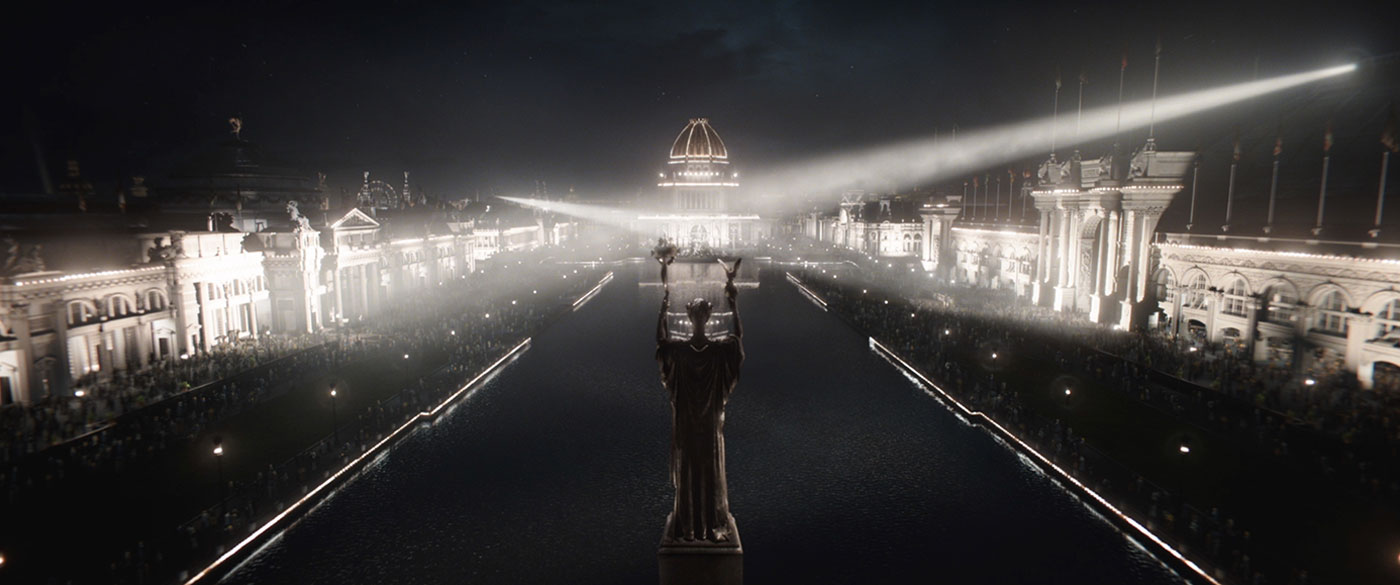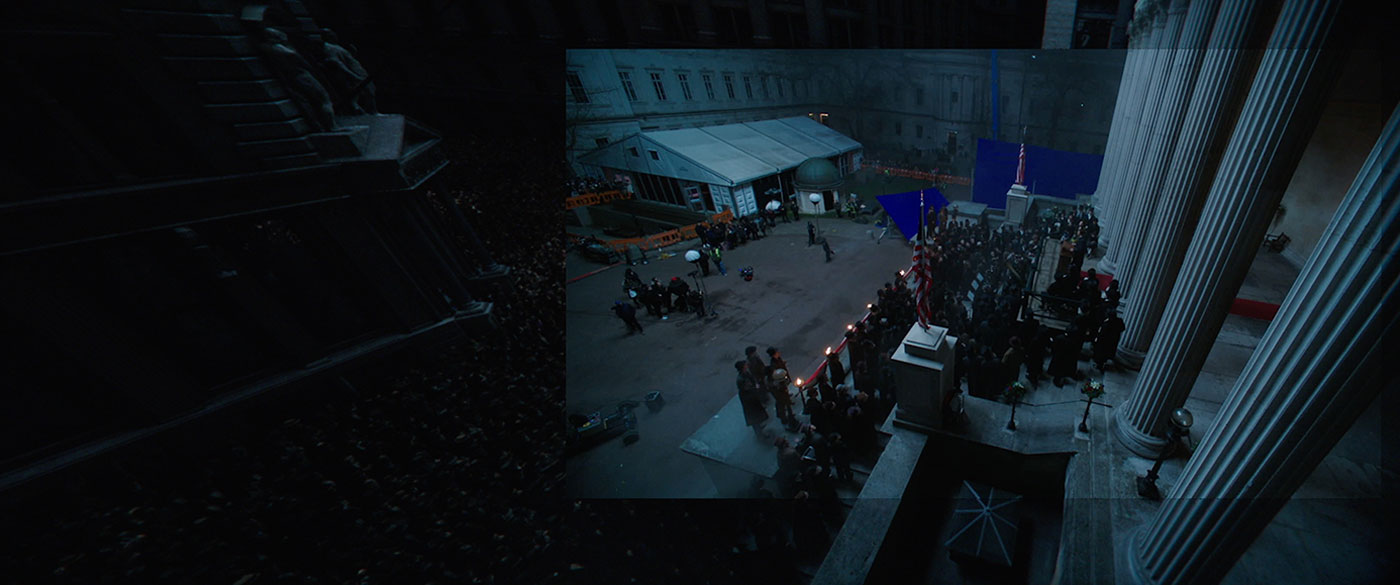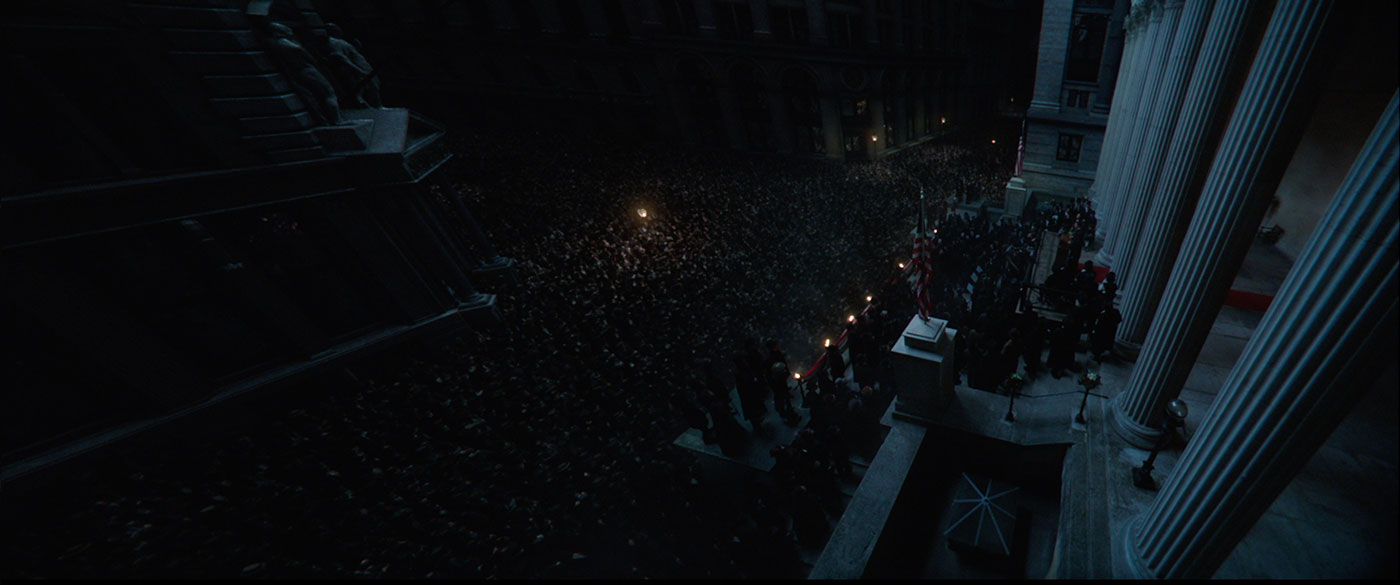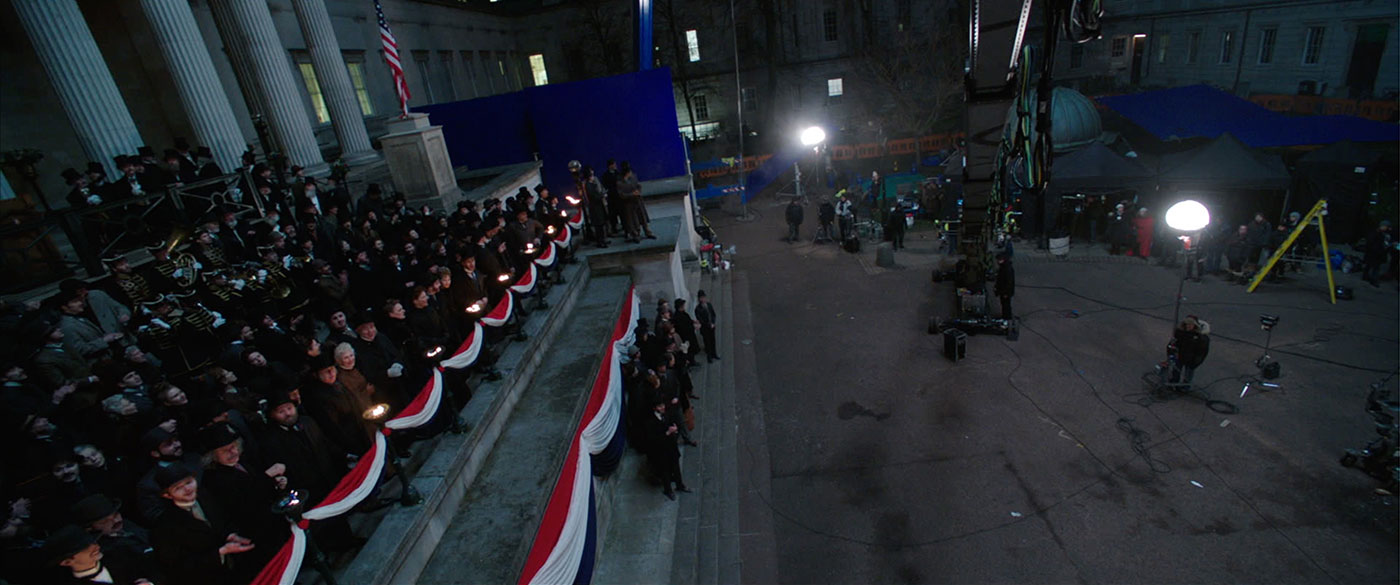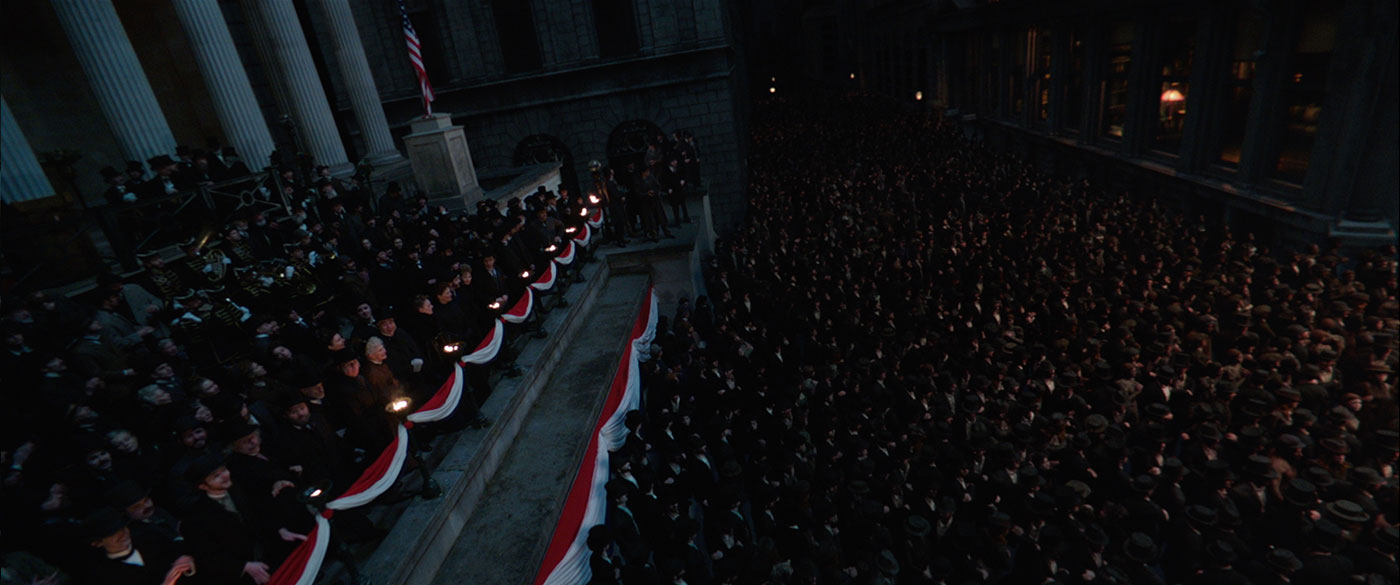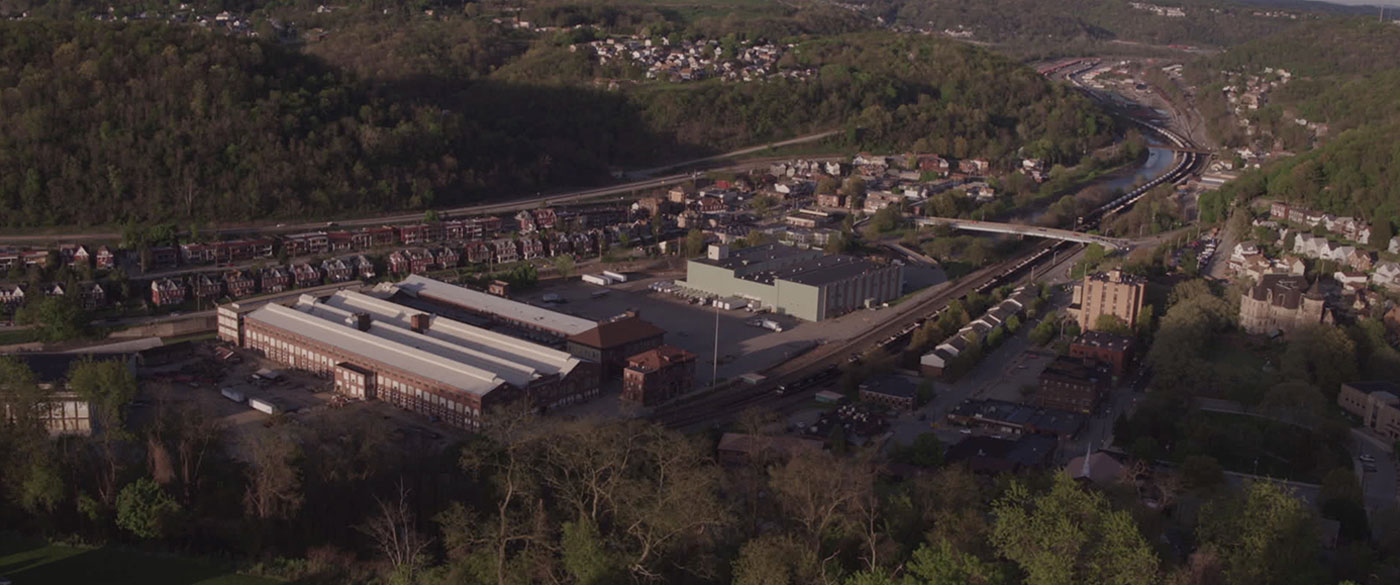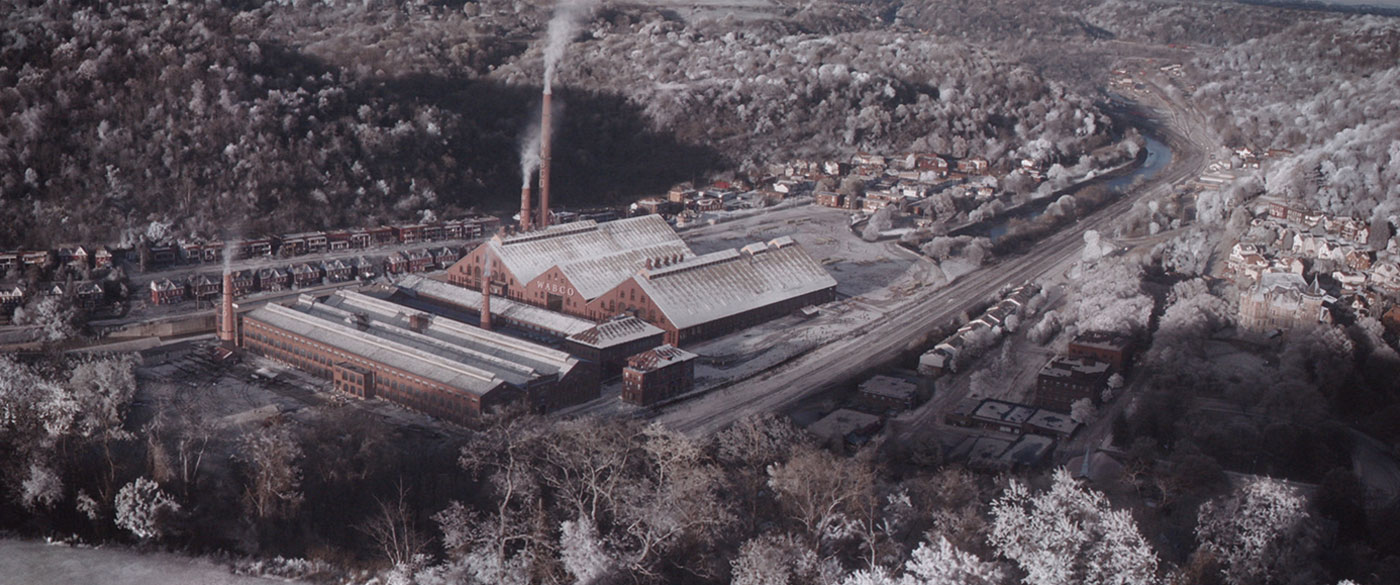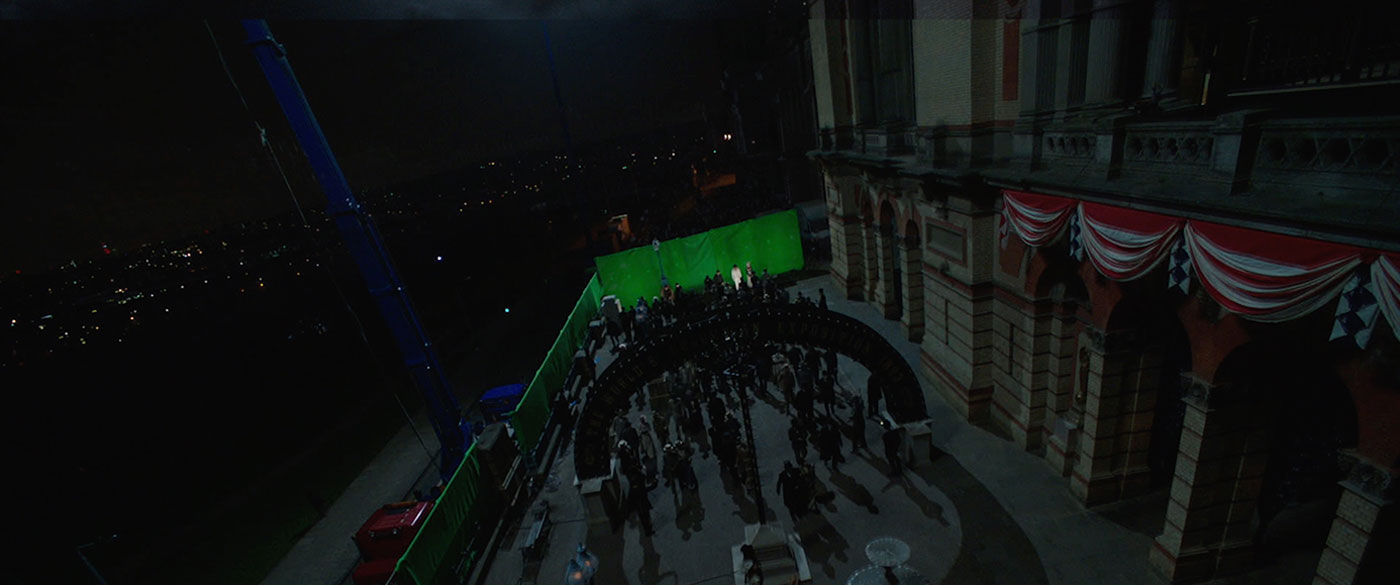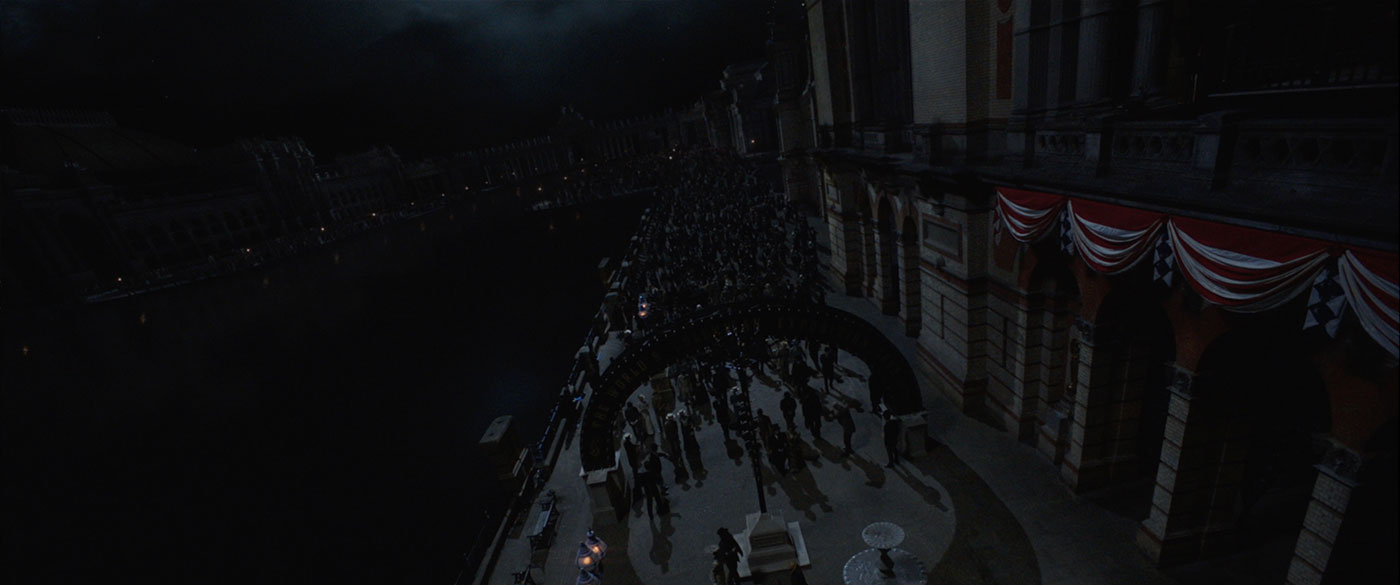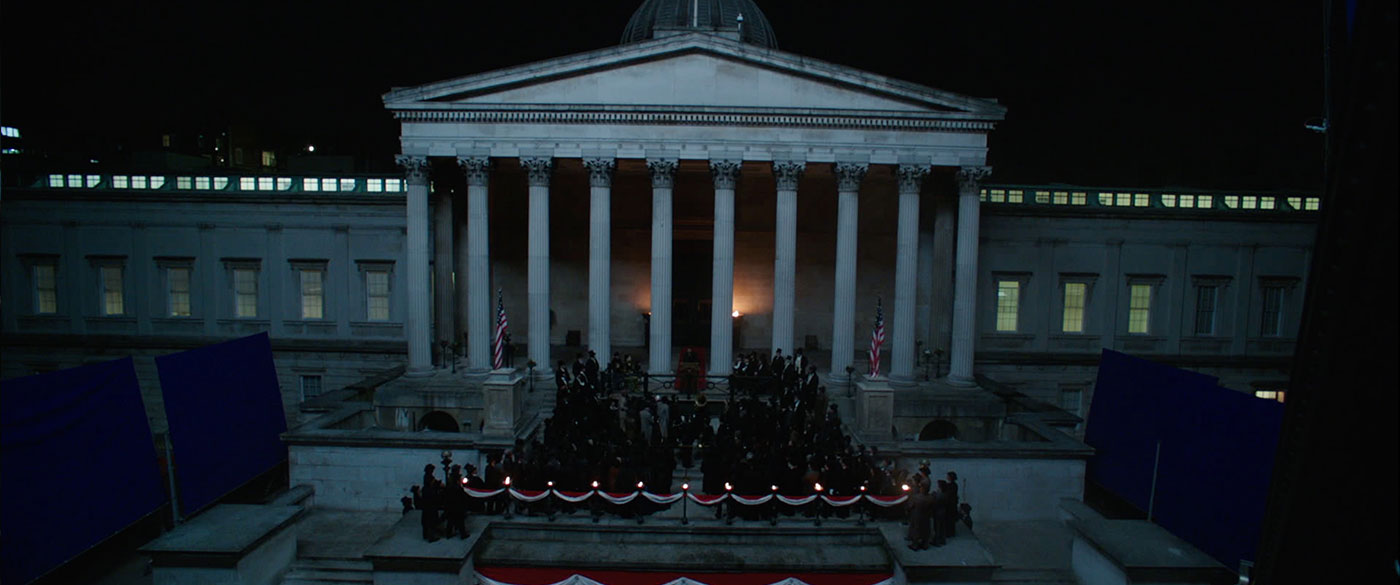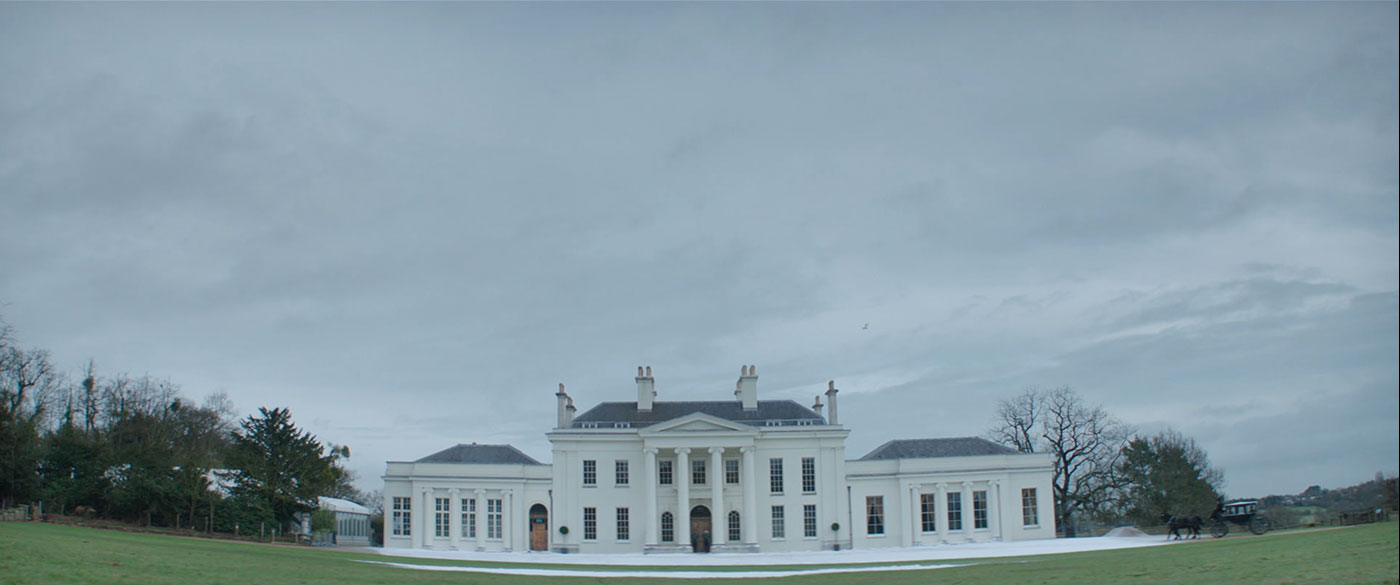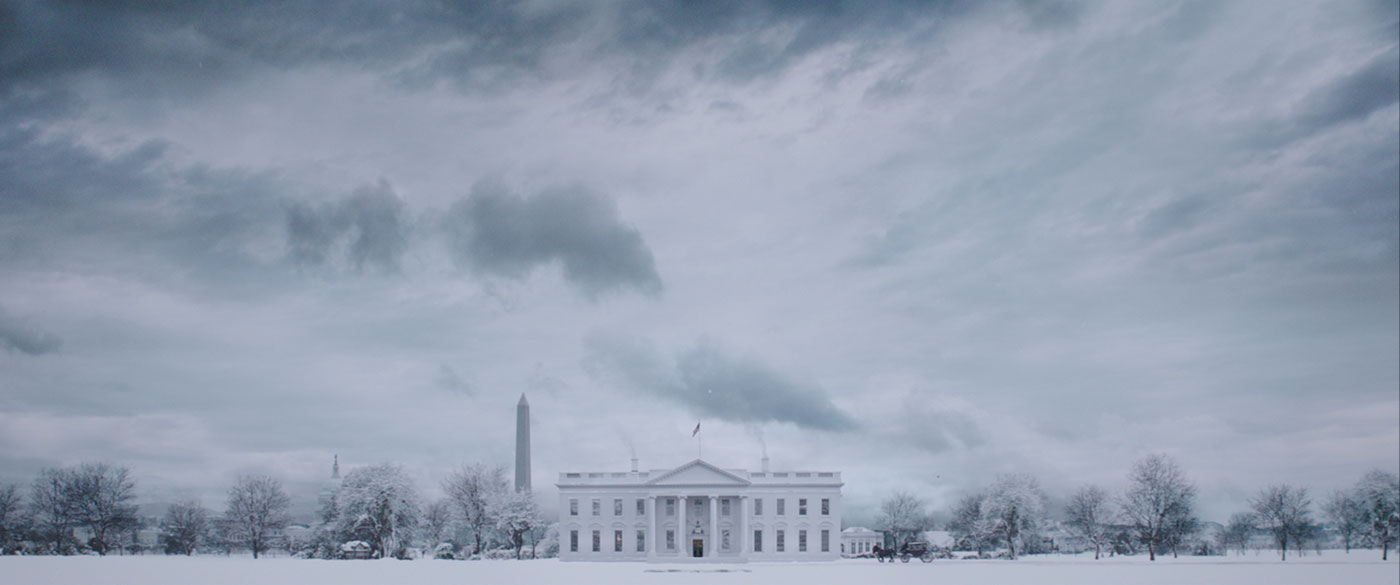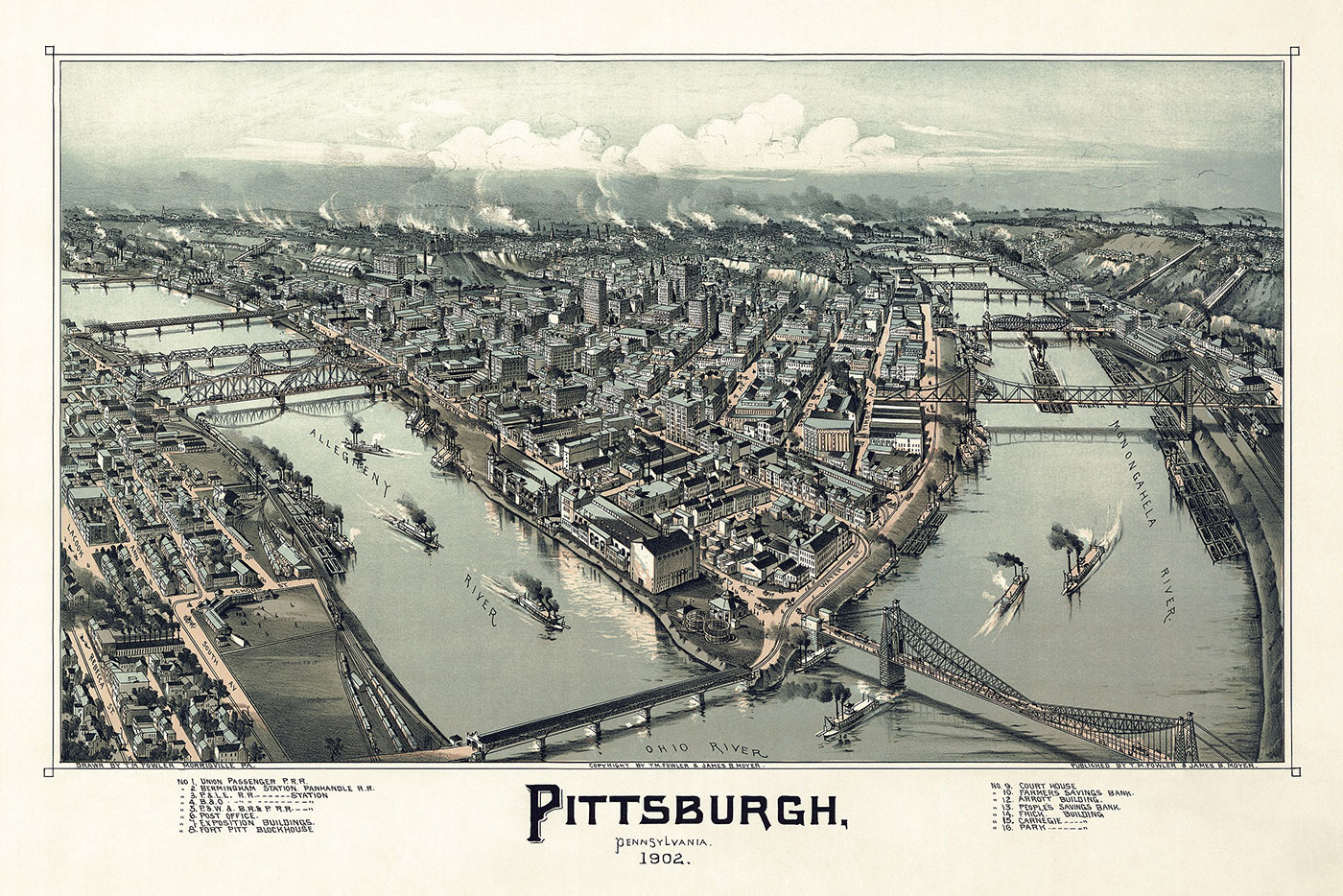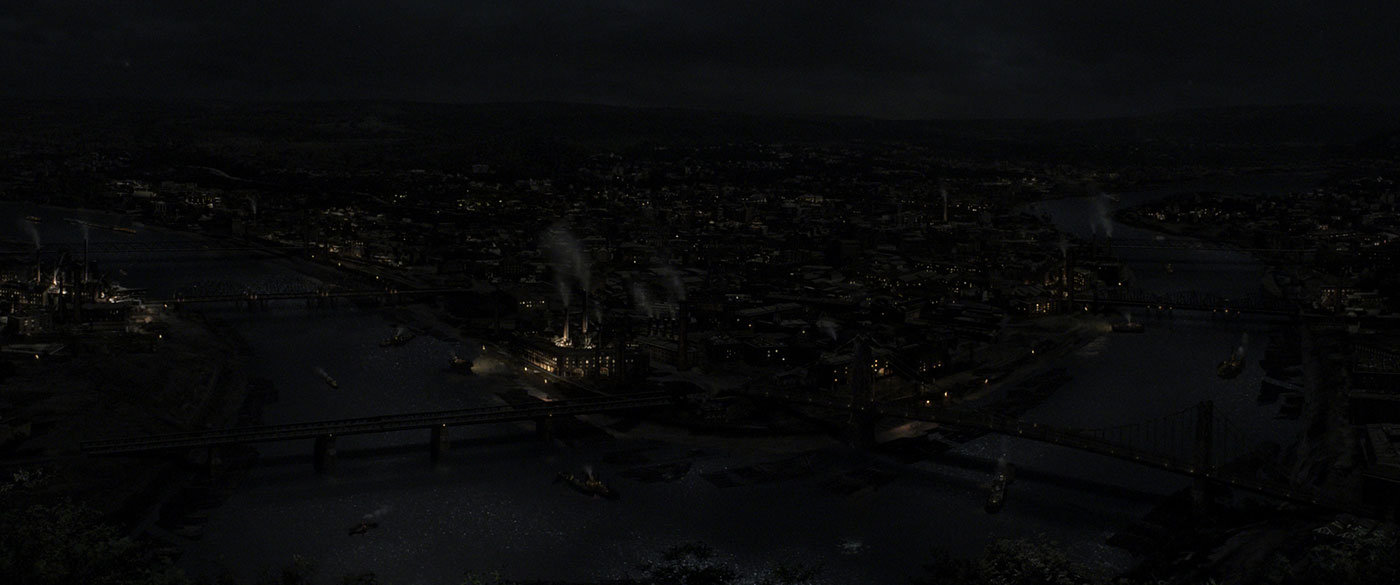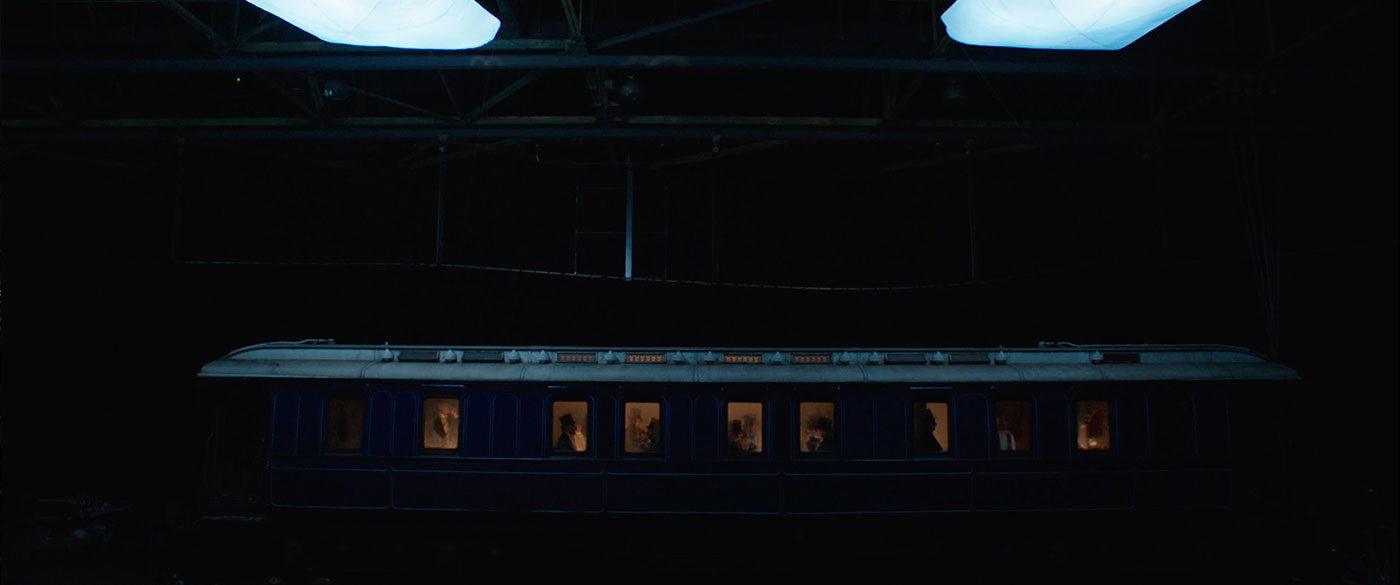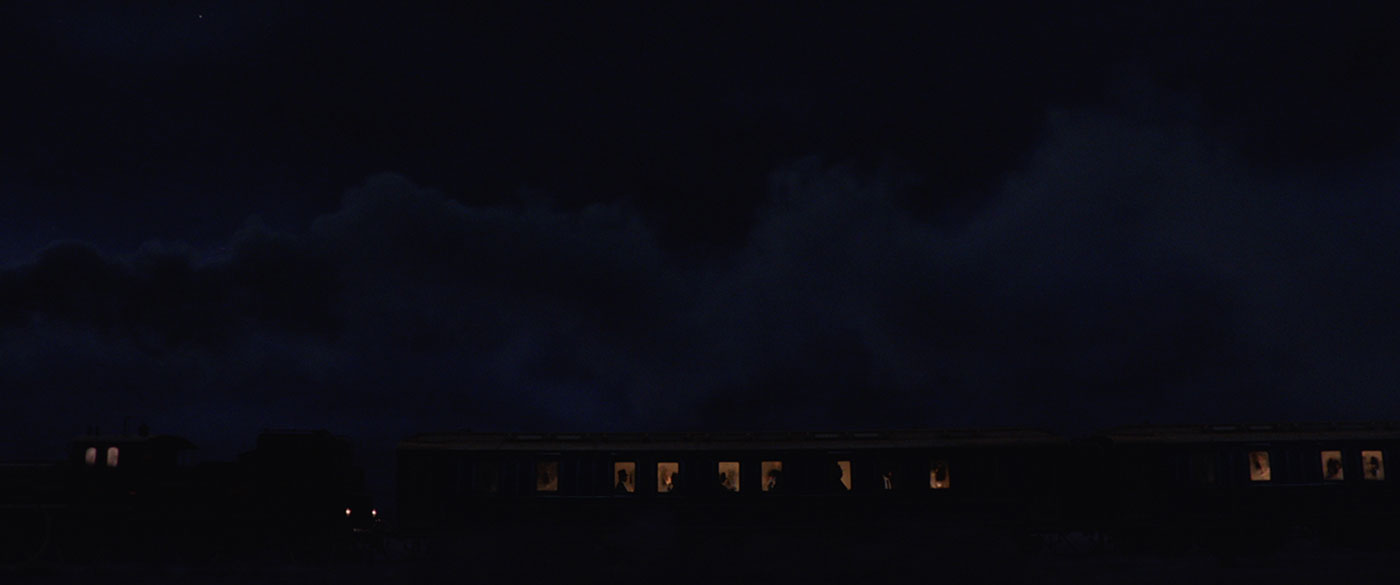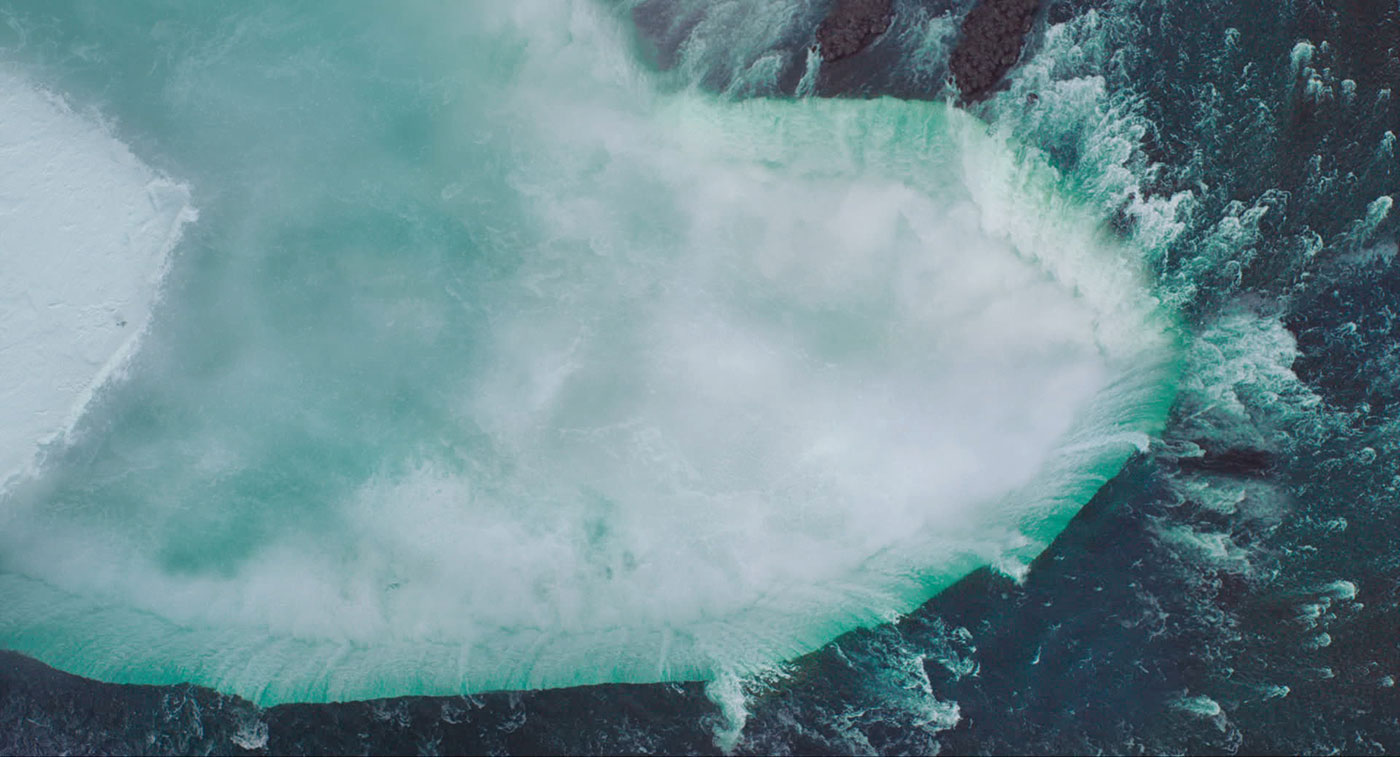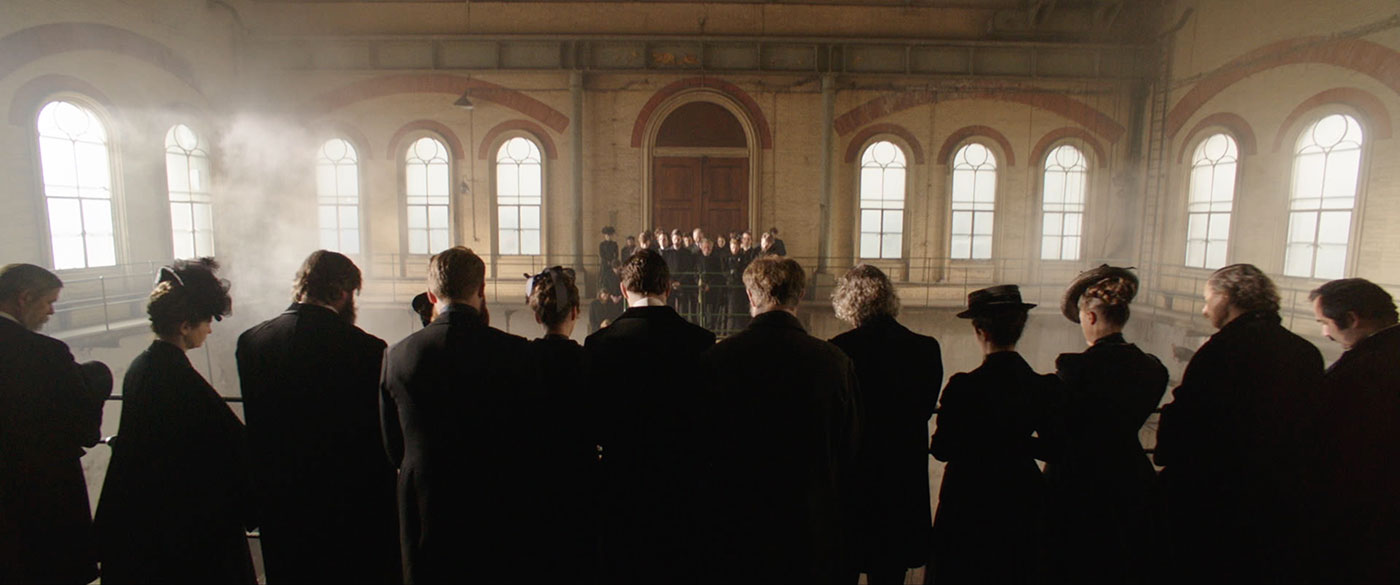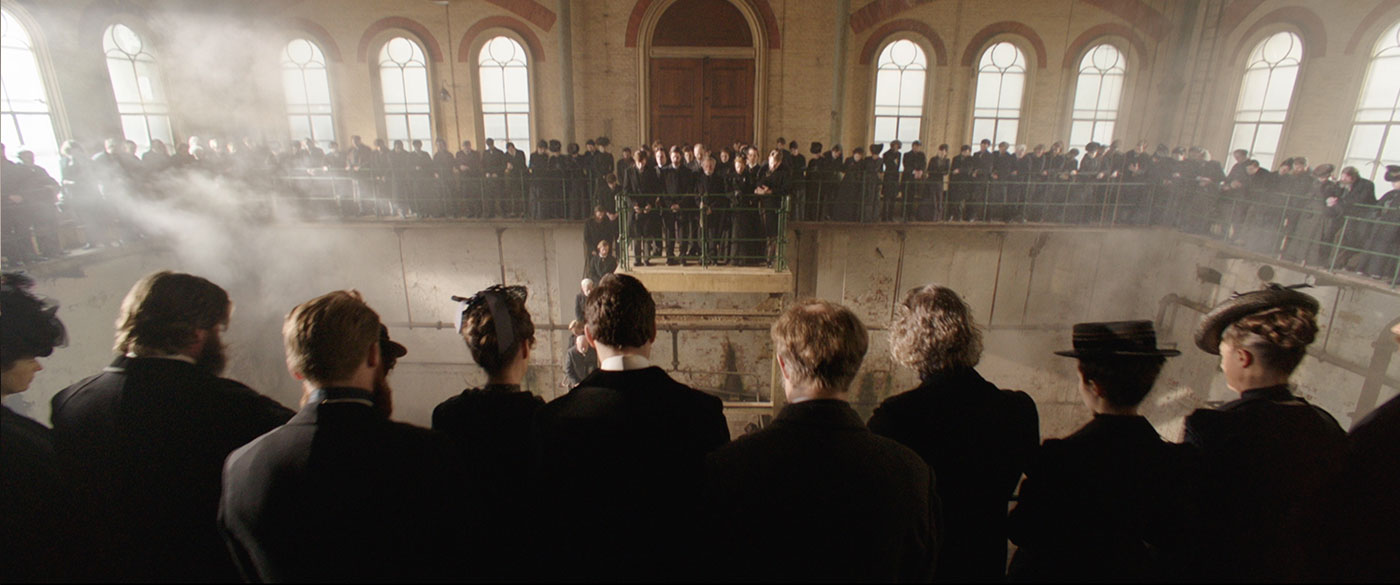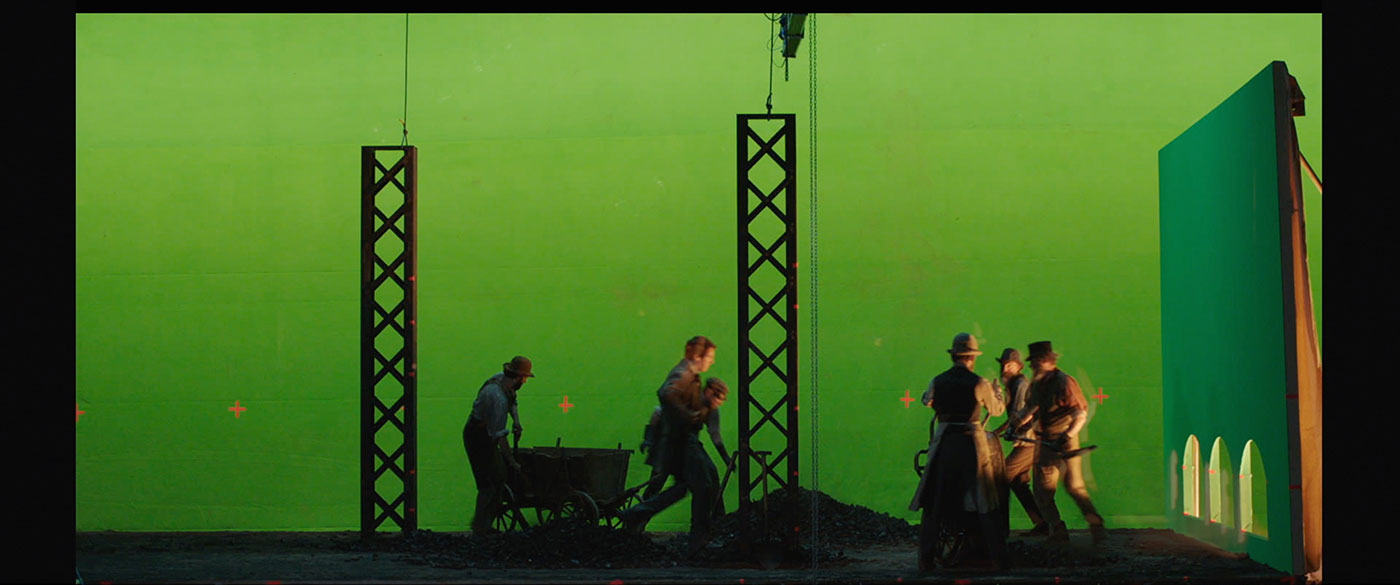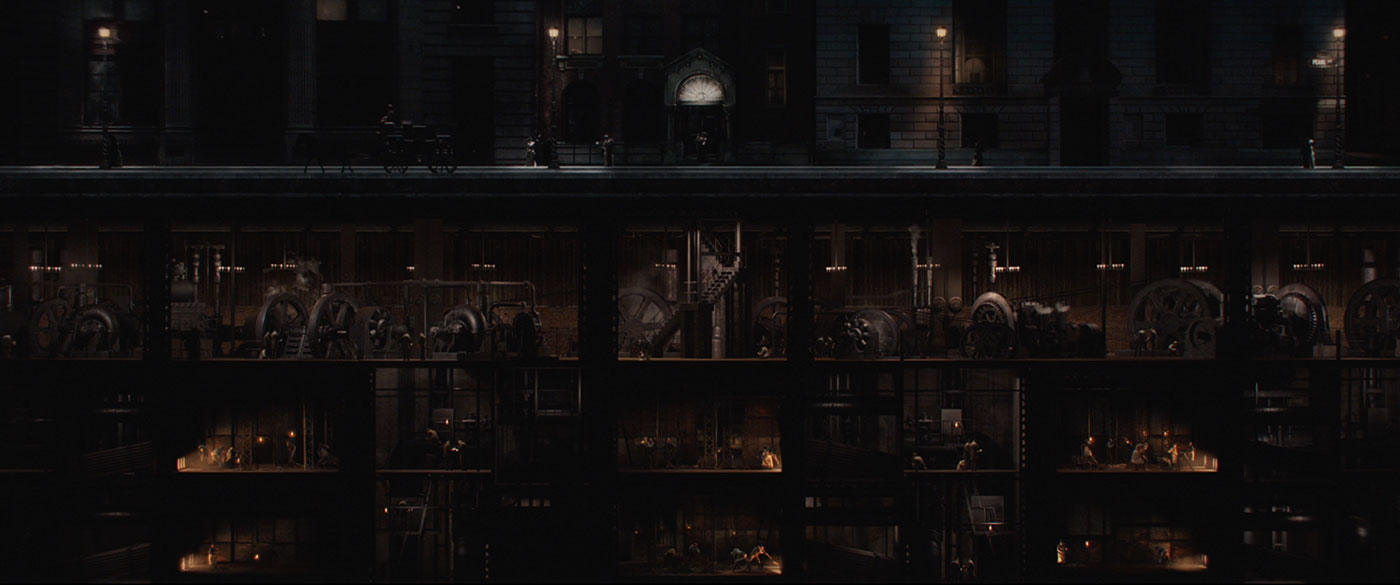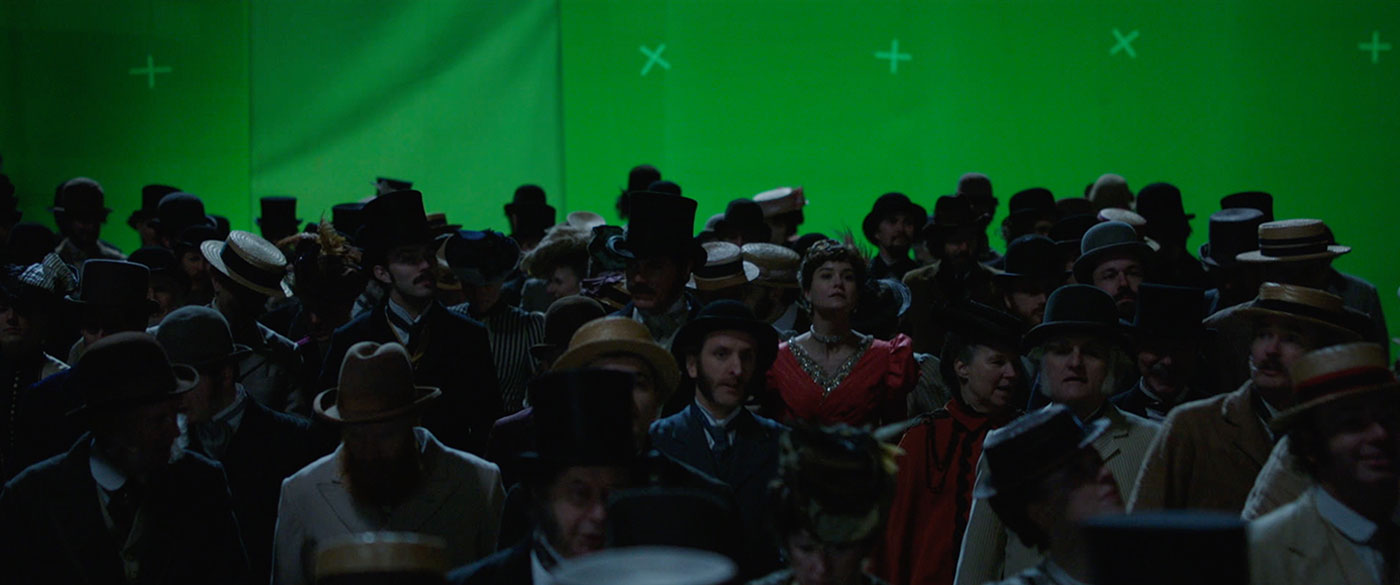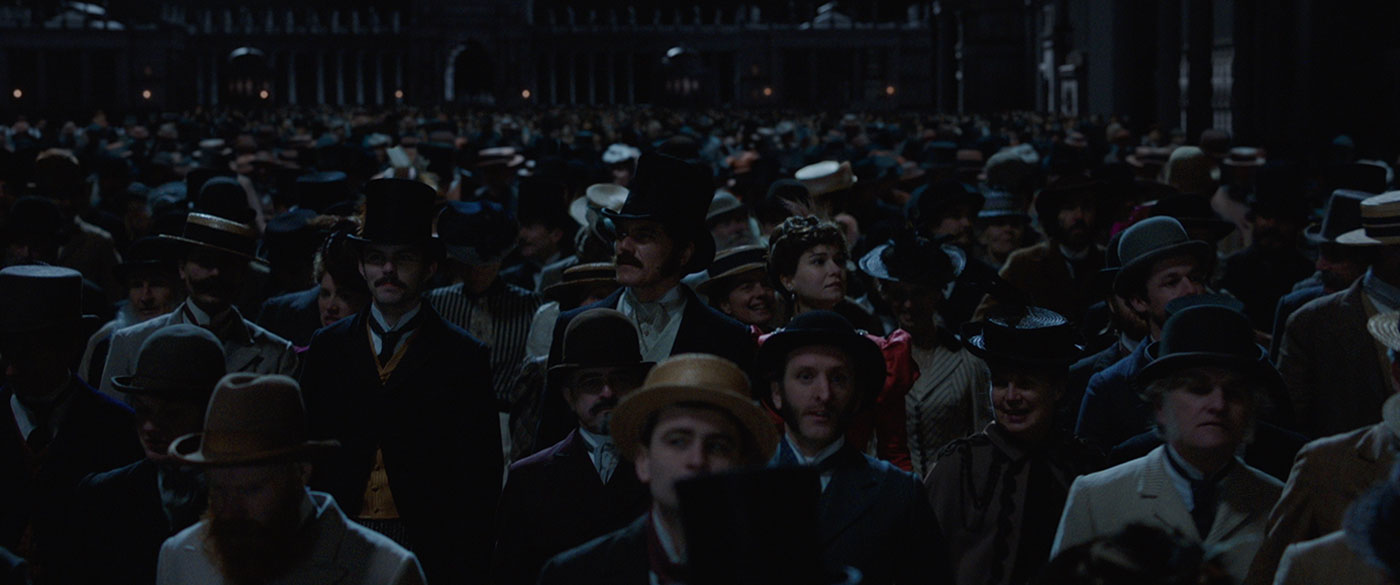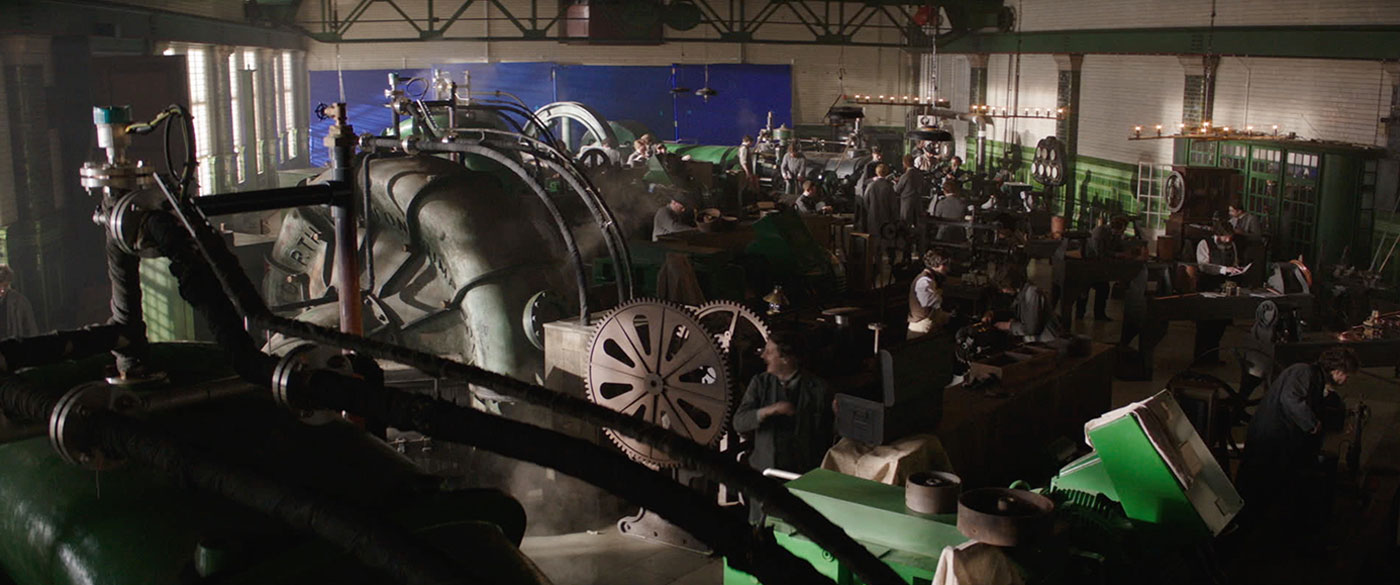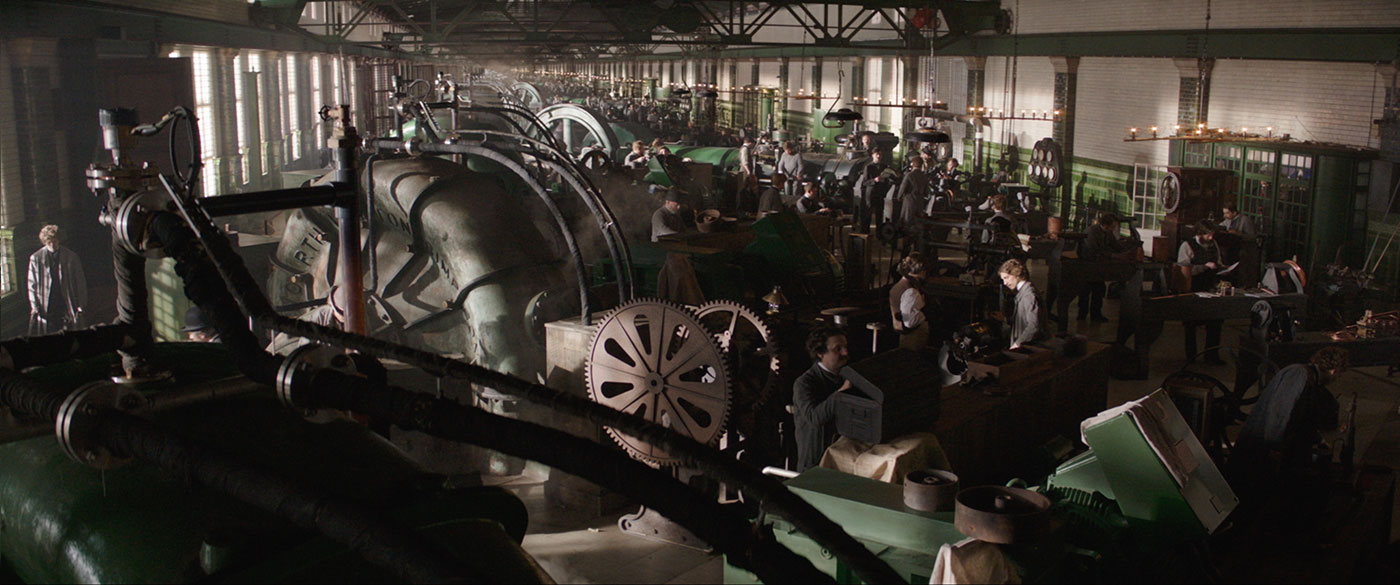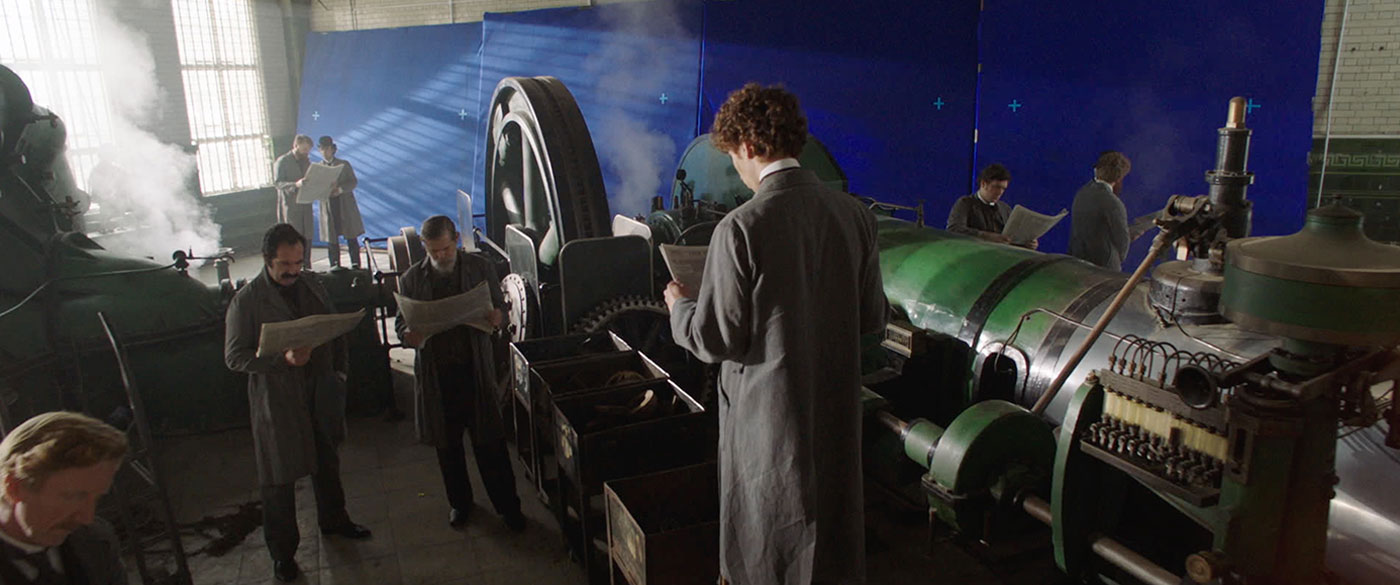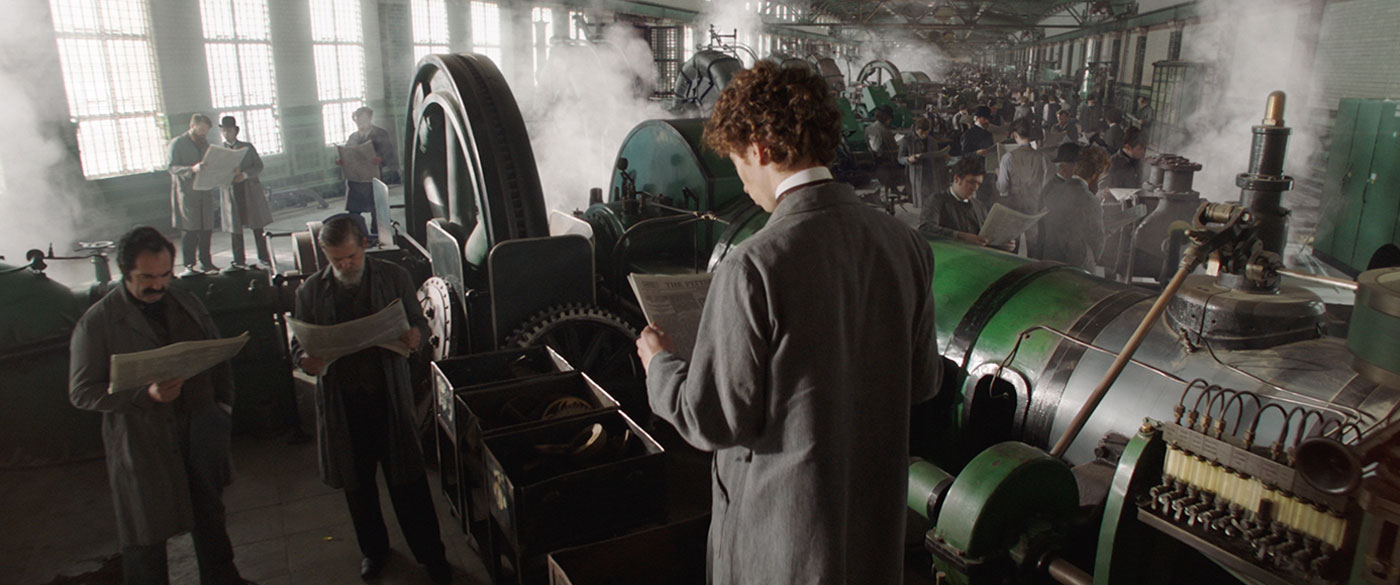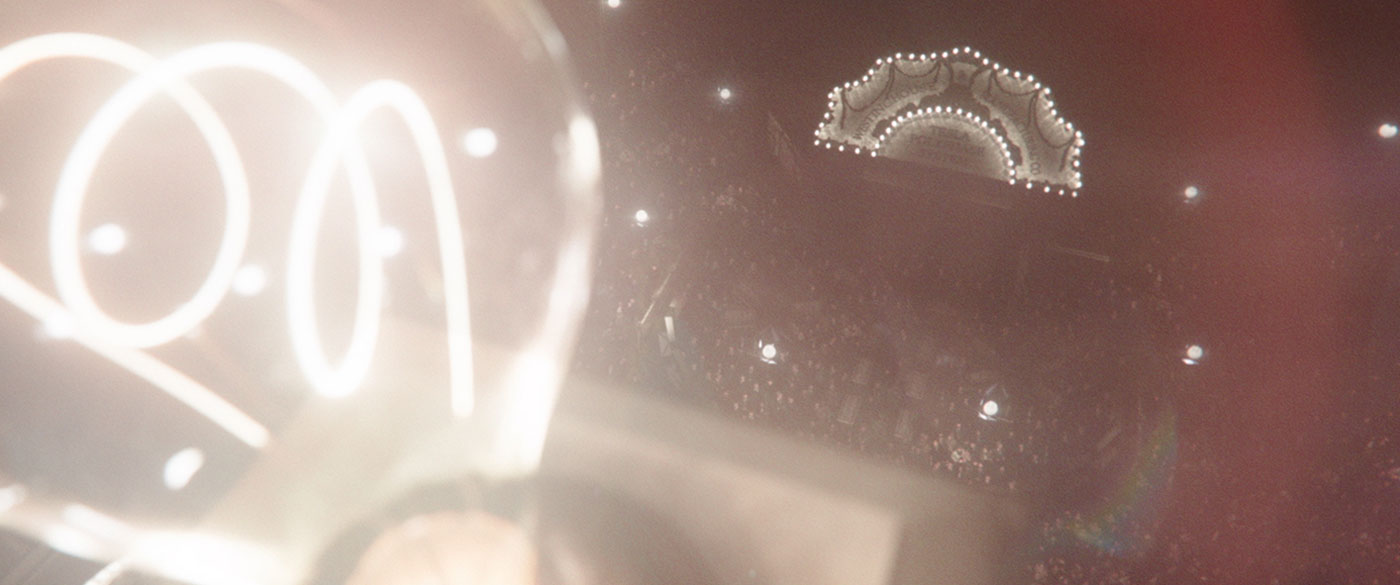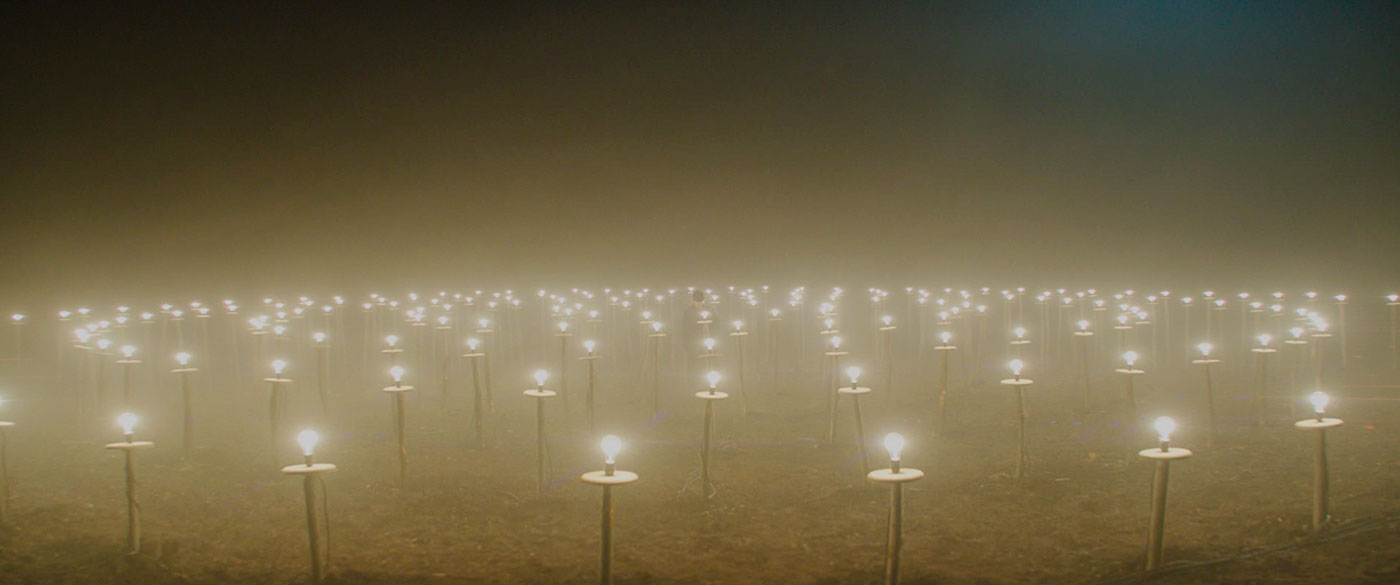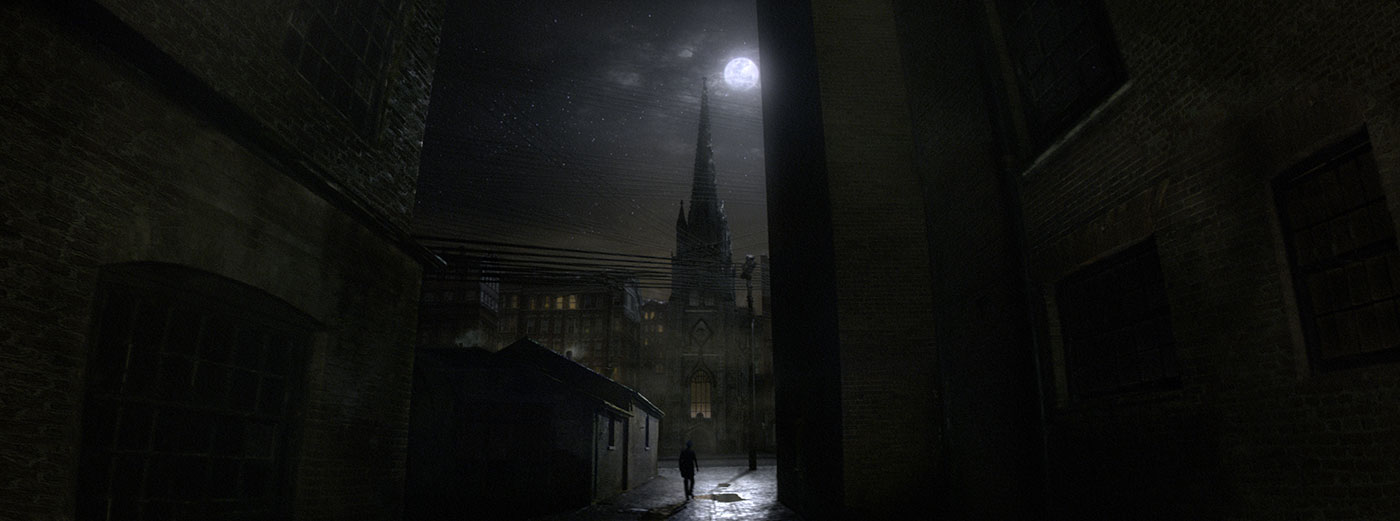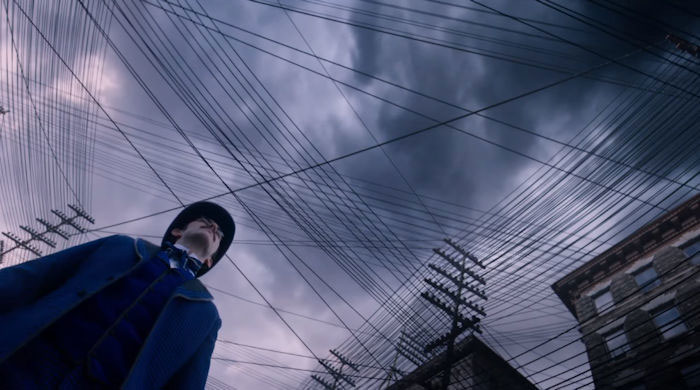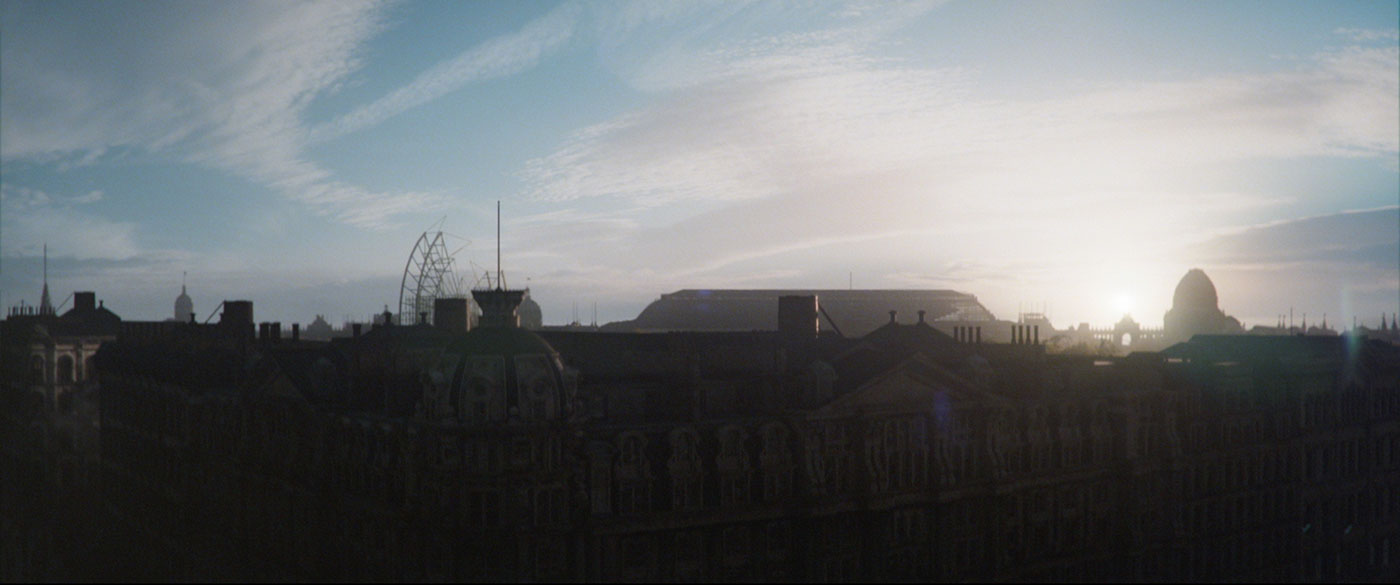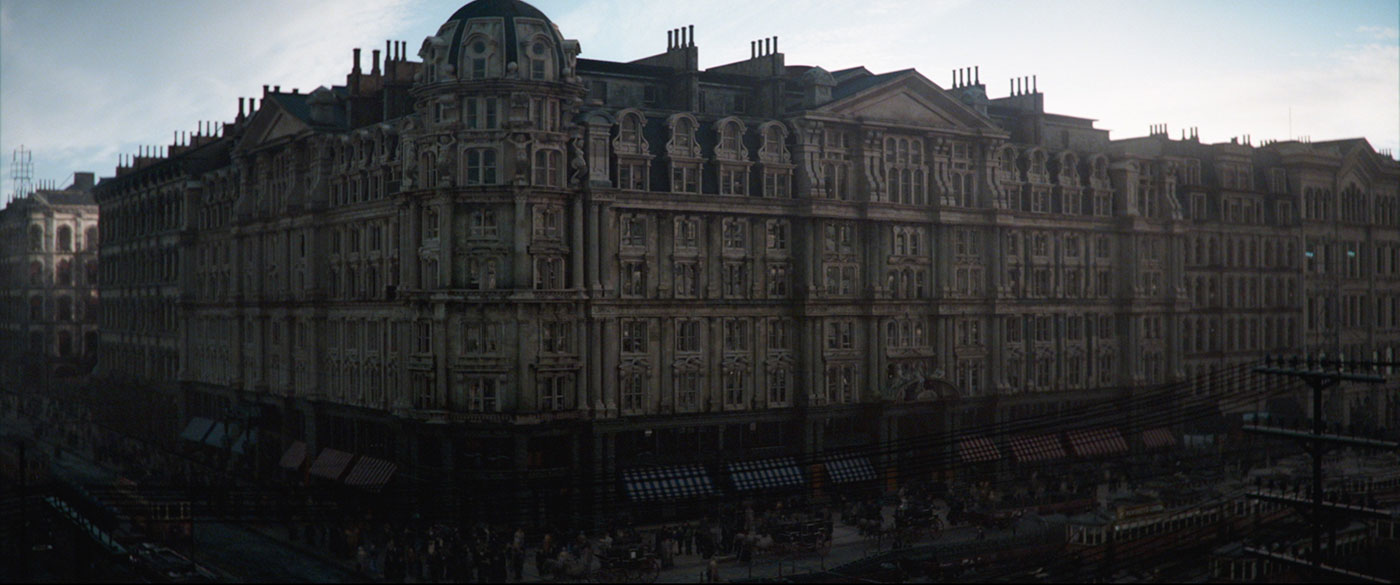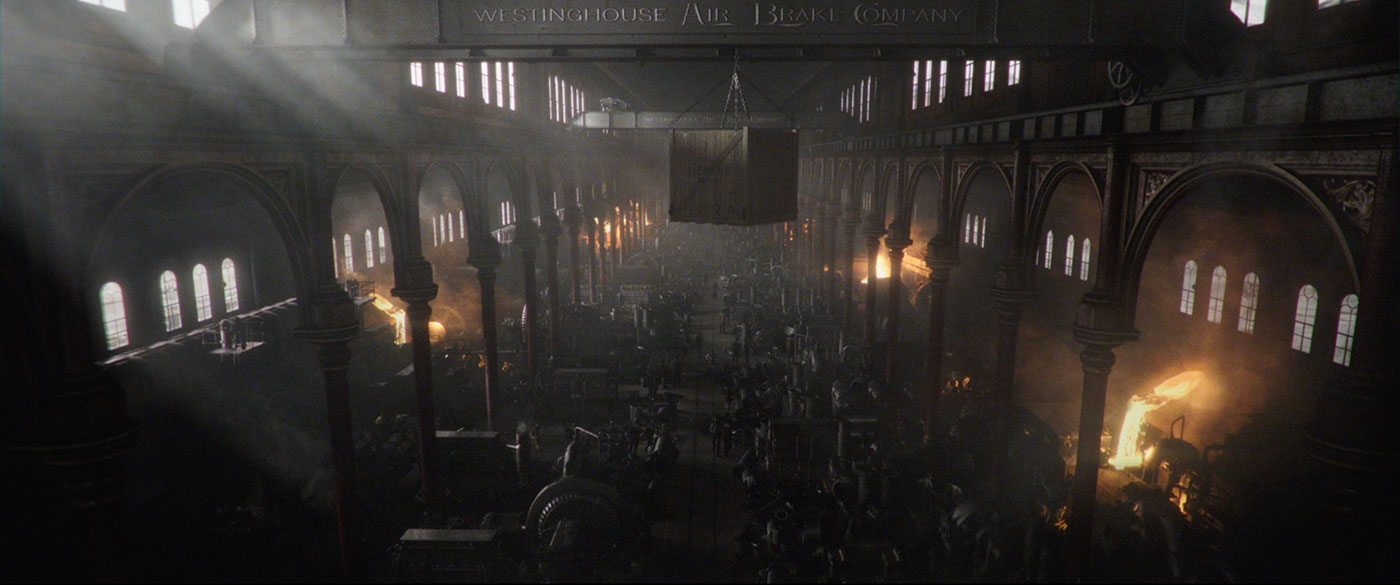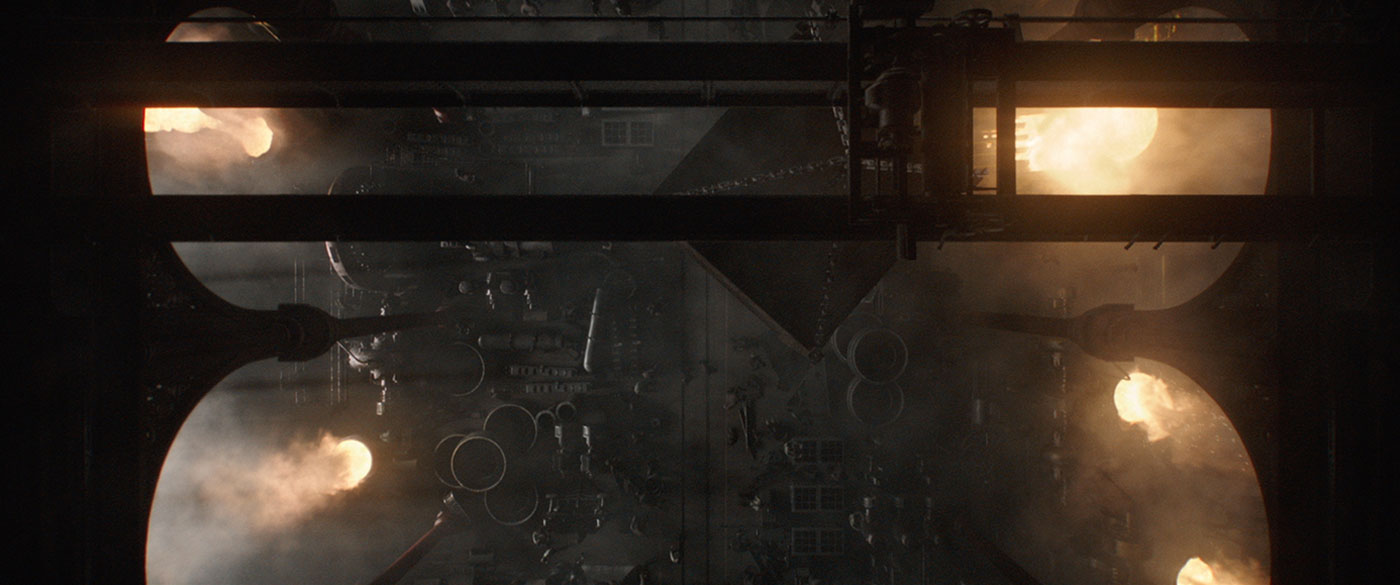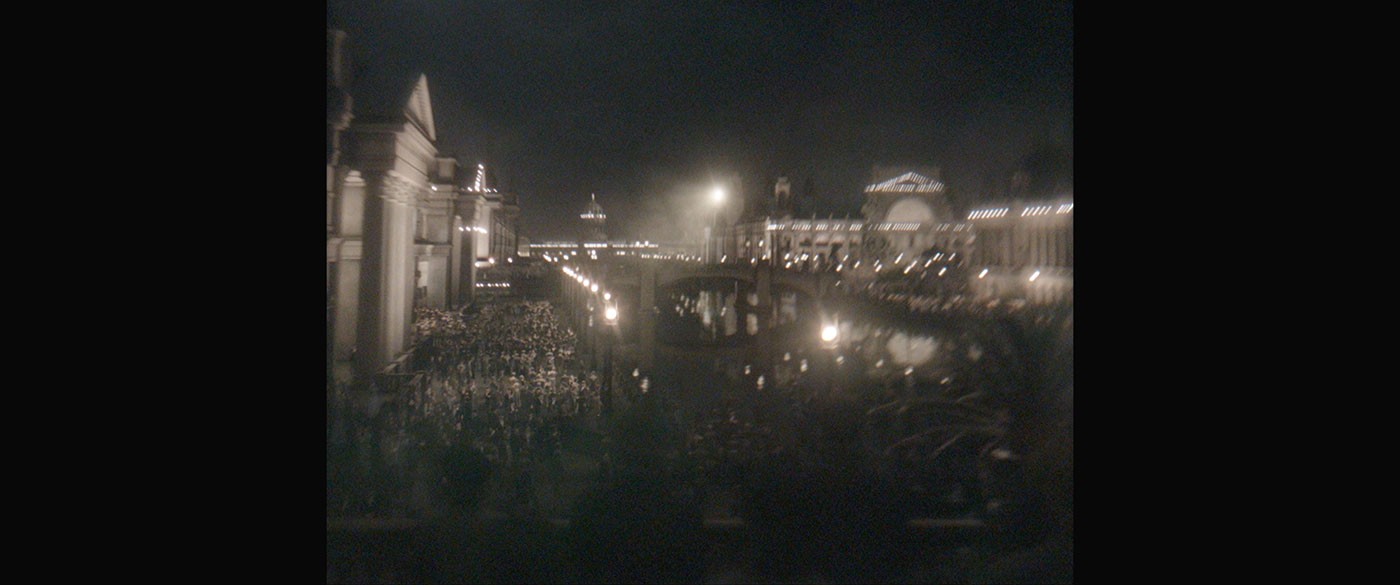In 2011, Justin Ball explained the work of Brainstorm Digital on BOARDWALK EMPIRE. He then worked on projects such as THE ADJUSTMENT OFFICE, TRUE DETECTIVE, AMERICAN HORROR STORY and AMERICAN MADE.
How did you get involved on this show?
I’ve worked with Alfonso previously on a few different projects over the years. AMERICAN HORROR STORY and RED BAND SOCIETY. It was Alfonso who helped sponsor me for my DGA card to Direct 2nd Uint when working on AHS with him while I was VFX Supervisor.
How was the collaboration with director Alfonso Gomez-Rejon?
Terrific. Alfonso is such an inspiring and creative artist. Every conversation always pushes you further, inspires you to help fulfill his vision and to be a better filmmaker.
What was his expectations and approach about the visual effects?
Alfonso always wants to push the limits of the visual. He wants to do things never seen before. He doesn’t want to hear the easy approach to any VFX gags. He wants to challenge everything.
How did you organize the work with your VFX Producer?
Lisa Kelly was my VFX Producer and she’s a superstar. We had many fiscal challenges to the show, and she worked tirelessly to navigate all our limitations to always maximize the best product for the screen.
Can you tell us more about the previs and postvis process?
One of Us was our lead vendor and as we navigated the various shot requirements they would also generate Pre-Viz and Tech-viz for us while filming. They are such a remarkable team of artists. I would be able to come to them with our most challenging creative problems and they would always come back with a solution. Even while we were in the edit and re-inventing sequences, they would come back with amazing ideas that we could edit and refine our vision with.
While in prep we were building and designing shots, quite a few of which were very delicate transitions from one scene to the next. Not many of these lived in the final film, but we previs’d and tech-viz’d quite a few things.
This continued when we were post. Both helping us work up new ideas that weren’t initially planned for with our footage or helping us solve story beats in a visual way. They were great collaborators to the process.
Where was filmed the various parts of the show?
The bulk of the film was shot in and around London, along with Newcastle.
I had separate units that went to Birmingham and Niagara’s Falls. I shot various elements in New York while I was in post still on AMERICAN MADE. I also had drone units run in Chicago and Pittsburgh.
Can you tell us more about your work as Second Unit Director?
Sure. I had about 10 planned 2nd Unit Days, shooting all sorts or material. Some days it was due to us having a limited time at a location, so I would run a unit in parallel with the main unit to maximize the material we could acquire while at the location, filming exteriors and establishing shots etc. Or I would have sequences in the script or that Alfonso wanted, and then we would figure out how to pull it off and go shoot it. Like the Phonograph Sequence of the Sequence with Westinghouse Lighting up Great Barrington. We shot that across various different locations; A freezing mountain top in New Castle, Black Country Living Museum in Birmingham, and on the stage with live projection of plates.
How does that helps you for the VFX creation?
That’s an interesting question. For certain if I was shooting a shot that was meant for VFX it was great. I knew exactly what I was after and could communicate that to the best of my understanding of the work and execute. But, I do find for VFX shots that include performance from actors or more mechanics than just the VFX, I’m my own worst enemy. As I will wear my directors hat more and chase the performance over the technicals of the VFX.
But, on this show, my 2nd unit work was more based on expanding the richness of the world Alfonso wanted to create, so my units were not solely VFX related. I may have a shot or two in the day that may require VFX but I was more shooting in locations that the main unit could not travel to. We had lots of work with horses and carriages, arriving to great Barrington sequence, portions of the World’s Fair light up sequences, and lots of little sequences throughout the picture. The phonograph sequence, which was one of my favorite to film. (I’m happy that made it back into the film with Alfonso’s edit). We even shot scenes with Mary and the Edison children and Southwick-Brown. And when not shooting second unit, I normally had another splinter crew running pickup detail work, rear-screen projection plates, inserts and composed frames for Alfonso to edit with.
What are the main challenges with a period movie?
All period films and shows have a variety or challenges, and it always depends on the period you are trying to recreate. The biggest challenge with this film was that it spans the time of before and after the creation of photography. So the biggest challenge was trying to be faithful to a time before photographic images of the places we were trying to recreate. We researched many drawings, illustrations, and etchings then cross referenced them with the first known photographs of a location or readings I did about the time. We had lots of locations we needed to be versed on how they looked.
Filming in the UK for 1890 US East coast also had its own variety of challenges. While we would get certain features and filming locations that would appear to be pretty period accurate, but then would have lots of UK specific elements we would have to workaround.
Can you explain in detail about the creation of the various cities and environments?
This was a challenge. Most of our reference of the time was through etchings and drawings, so it was rather difficult to be as period accurate as we wished to be. We did a lot of work comparing the first photographs of cities and locations with the etchings and drawings and rolled back as much of the history as much as we could understand. Whenever I embark on a project like this I do as much research as possible. I read as many books on the subject as I can in the time I have and as much visual reference as it’s possible to digest in time. It’s always an evolving process in you continually find and digest new details that you may have missed previously. All the bits that make it as authentic as possible. So much has changed in 130 years from cities that are still standing, and places you can film. But they only offer slivers of history. Especially when you are filming in a different country. We were chasing slivers of locations. Take the Wall St sequence for example. We filmed that sequence on the steps of the University College London. We kept the column and stairs, and then built New York City. We chased and discovered pieces of the world in the UK and then built the cities around them.
Wall St.
White House
What kind of references and indications did you received for those locations?
The show had a researcher that had built an initial library of materials for us to review. But as we got further into prep and filming, I did lots of additional research to help flush out ideas Alfonso had, or to figure out how to film a specific location in the script that we could not find in the UK.
How did you manage the various lighting conditions?
For a large part of the show, we wanted everything to play dark, or as natural light as possible. We wanted to build until the moment of illumination at Chicago World’s Fair. That when the lights came on, we were just washed with light, almost to where, we the audience was squinting like the characters on screen. We played heavy into the blacks and heavy into flares and lens effects.
Which location was the most complicated to recreate?
For Me, it was Pittsburgh. And oddly enough it was where I was born and raised, so I wanted to be as accurate as I could. Initially one of the motifs we planned on creating for the film was to play with the idea of pre & post birth of Photography. So one of the ideas we came up with was the evolution of our establishing shots in the film from drawings to prints to etchings, to the climax of the film and actual photographs of the Chicago World’s Fair from 1903 that we brought back to life by re-projecting the images and adding CG people etc. This plan adjusted when in post and went back to more traditional establishing shots of cities, but in certain cases, we like the impossible vantage points that the drawings provided us. Pittsburgh was one of those cases. It was also initially part of the Edison Opening sequence.
We based our Shot on this image.
But we made it night, and rolled it back in time to be more accurate to the look of the city. And to me, that meant the lack of light. This was the time of Arc Lighting, Oil lighting, and natural gas flame vents along the river; Pre-incandescent. So it was important to me that it was dark. We wanted to sell the darkness back then, the time before this innovation. Wall St was the same, I wanted them to play dark, hard contrast and heavy fall off from the point lights. We wanted you to squint, like you do in the darkness. That way the beauty of the lights at the world’s fair are just that more brilliant and exciting.
Can you tell us more about the FX work such as trains smoke and water?
For this we had a nice mix between practical and CG. I’m the type who will always try to film anything I can. CG tends to be my last resort. I will always go for plates or elements, anything I can get. But, some examples:
The opening scene with the train, that was CG as it was multiple stitched shots put together. Including drone plates I shot outside Toronto and performance plates shot on stage in London. One of Us has some great Houdini FX artists and generated some great sims for us there.
But Niagara Falls I filmed. All of that was real. We just had to tile it out when filming as I could not get all the falls in the frame.
How did you create the various crowd shots?
We had a mixed approach here. I would shoot tiles or elements when possible. But as I’ve worked with Alfonso before, I knew the uses of that were limited. Alfonso likes to move the camera a lot, or use severely wide angle lenses, so I would cherry pick tiles and element shots when I could, even on other locations, just to put as much in camera as we could. Sequences like Wall St or Chicago’s World’s Fair were a mix of tiles, elements and CG people in the deep BG.
The Dollhouse Shot was done with various element passes.
Can you tell us more about the crowd animation?
All of this work was handled wonderfully by One of Us. We provided them T-Pose elements of our background actors. We filmed as many GS elements as we could and tiled them out. But many sims as well. Especially at Wall St.
How did you choose the various VFX vendors?
Alfonso had met with One of Us prior to me joining the show and he was very keen on using them. Once I had my initial meeting with them I understood why. They are a great team of artists and creative thinkers.
BlueBolt had a pre-existing relationship with the Weinstein Company, which was the original studio the film was green lit under. They were a great crew to work with as well.
NVIZ – I had met with when we were shopping for our vendors initially and I loved their approach to the challenges of the show. Lisa Kelly also had a prior relationship with them as well, so that was a no brainer.
FuseFX – Has also been a frequent collaborator with Alfonso and myself. So they were a go-to when the film was getting reworked back in the states after the Weinstien drama.
How did you split the work amongst these vendors?
One Of Us was our lead vendor and was responsible for our big set pieces, Chicago Worlds Fair and WABCO. Along with the opening train sequence, matte paintings and the NYC / Wall St light-up sequences.
BlueBolt was enlisted to help us create Edison’s Laboratory and House, along with Niagara Falls.
NVIZ was brought in later to help the additional workload along with heavy Technical shots.
Ed Bursch helped create the Muybridge Sequence and News Papers.
FuseFX joined later for the Directors cut to adjust some of the news papers and the AC/DC sequence based on the updated edit.
Can you tell us more about your collaboration with their VFX supervisors?
All the Vendor Supes were great. Great collaborators and team players. We had locked in our lead vendors still while in prep so I was able to interface with them almost weekly as we were zeroing in our our different effects and production challenges.
Oliver Cubbage (Ollie) & Lars Anderson (One of Us) – were both great team players. I was able to lean on them a lot as my production and 2nd unit demands increased. I would often ping them to talk through both ideas and help tech-viz the crazy ideas I had for shot solves. And even in the situation of the Edison Dynamo shot (dollhouse); Simulate the breaking point of the elements we tech-vized and shot to their breaking point to re-envision the final shot. One of Us has such a great approach to creative challenges, it’s always fun working with them through difficult visual problems.
Stuart Bullen (BlueBolt) – The team, including Stuart were fantastic. They delivered a lot of great work for us. We had lots of adjustments and demands and they always delivered the work at a very high level.
Which sequence or shot was the most challenging?
Probably the lighting of the Chicago World’s Fair sequence, the Triptych. This was always one of Alfonso’s visions for the film. In prep he took us all out to the movie one night to see Able Gance’s Napoleon at the BFI. Alfonso wanted to recreate the Triptych sequence from that film, or make our version of it. While this sequence was re-envisioned while in the edit, we had to figure out how to pull it off. The plan was always for it to be a Triptych and play with the 2:35:1 aspect ratio. But we were pulling elements from everywhere to make the sequence work. Lots of the footage I shot both for that sequence and for other scenes along with some additional elements we picked up while in post. Even using photography from the original event that we re-lit for right, and used our Worlds Fair asset that we had built for the other sequences. And being a Triptych, there was a lot of material on the screen. 3 shots at a time. So it was a big sequence to tackle, even just logistically.
Did you want to reveal any other invisible effects?
Which ones are invisible? I see them all.
But we did have a couple of all CG shots in the show that were quite an undertaking.
Is there something specific that gives you some really short nights?
Chicago World’s Fair Triptych I would think was the one we worked on for white awhile. In the end I think it turned out fantastic. I was very pleased with that sequence.
What is your favorite shot or sequence?
Truly, they all have a place in my heart:
- The opening train shot.
- Wall St.
- Great Barrington.
- The Phonograph sequence.
- Muybridge.
- Building the Electric Chair.
- The lighting and electrocution at Chicago World’s Fair.
Alfonso created lots of great moments in the film. It was a joy to work on and help deliver his vision to the screen either by VFX or Directing shoots. It was a lot of material.
What is your best memory on this show?
Some of the amazing places I was able to go and film. My unit was often sent off to pick things up in various locations. England is such a beautiful country, so I love traveling around with my camera team scouting and filming and figuring out to pull of what we were tasked with.
And my time working with Alfonso, as we were in the trenches together. Lots of discussions and pitches on how to acquire all the material. There’s a lot of art on the screen in that film, from the locations to costumes to production design to the cinematography. It was all rather beautiful.
How long have you worked on this show?
All told, about a year I believe.
What’s the VFX shots count?
I think it landed around 490 after the Director’s Cut. That’s the amount that made it into the film. We worked on many more.
What was the size of your team?
We were small.
Lisa Kelly – VFX Producer
Sam Guest – Researcher & Data Wrangler
Michael Cheung – VFX Editor
What is your next project?
Since completing THE CURRENT WAR, I’ve worked on THE OA PART II for Netflix, UNHINGED for Solstice Studios, and am currently in production on PERRY MASON for HBO.
A big thanks for your time.
WANT TO KNOW MORE?
BlueBolt: Dedicated page about THE CURRENT WAR on BlueBolt website.
© Vincent Frei – The Art of VFX – 2019


